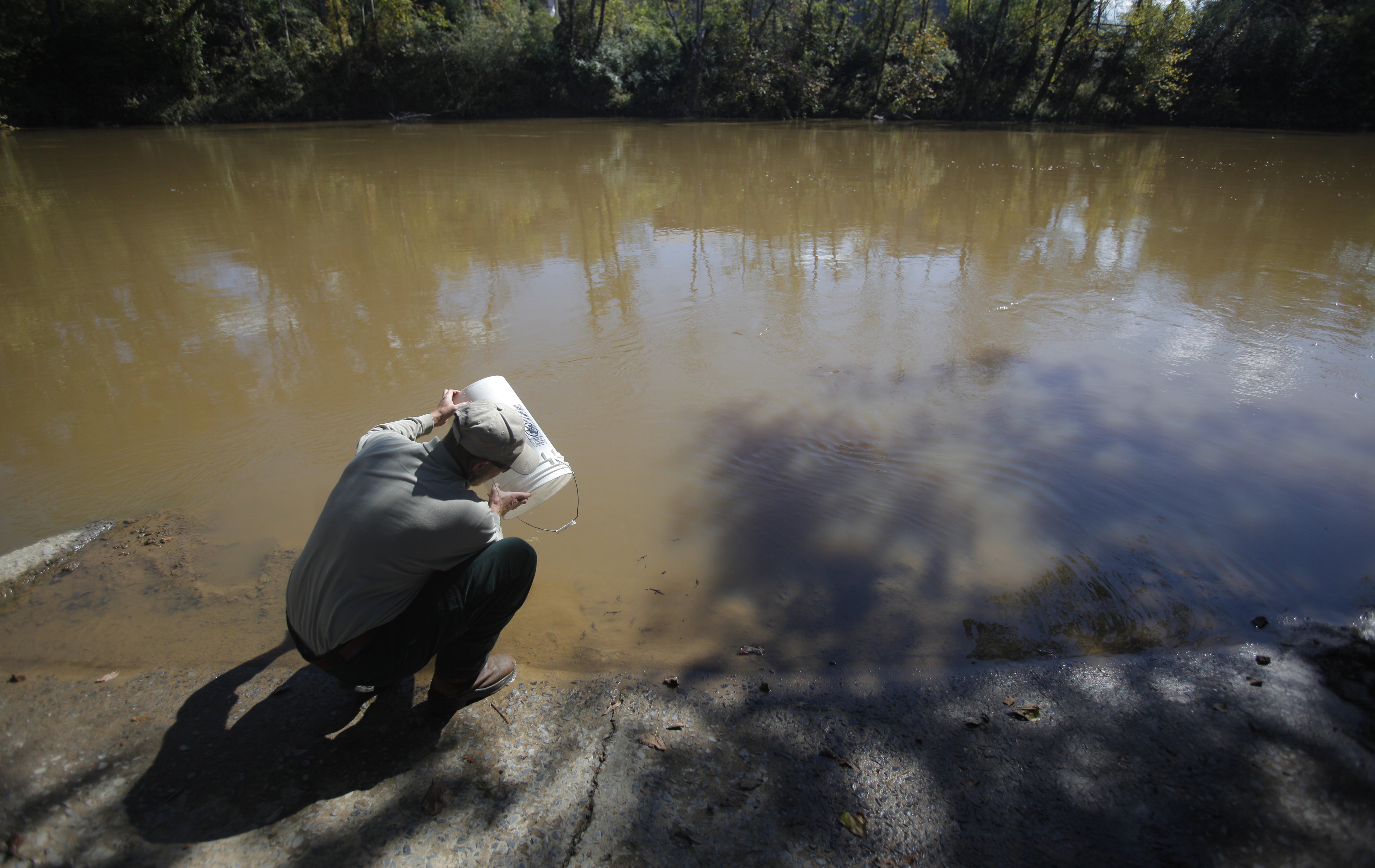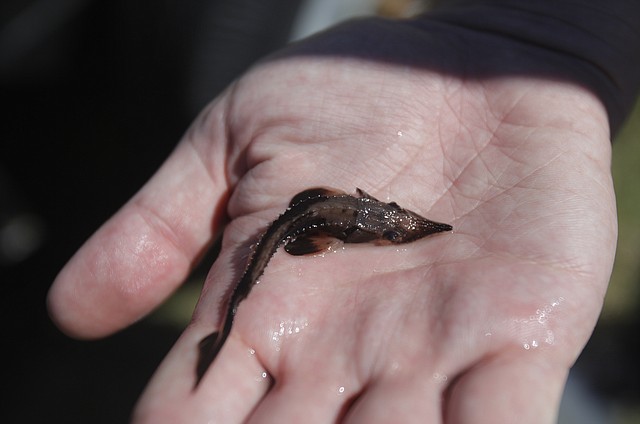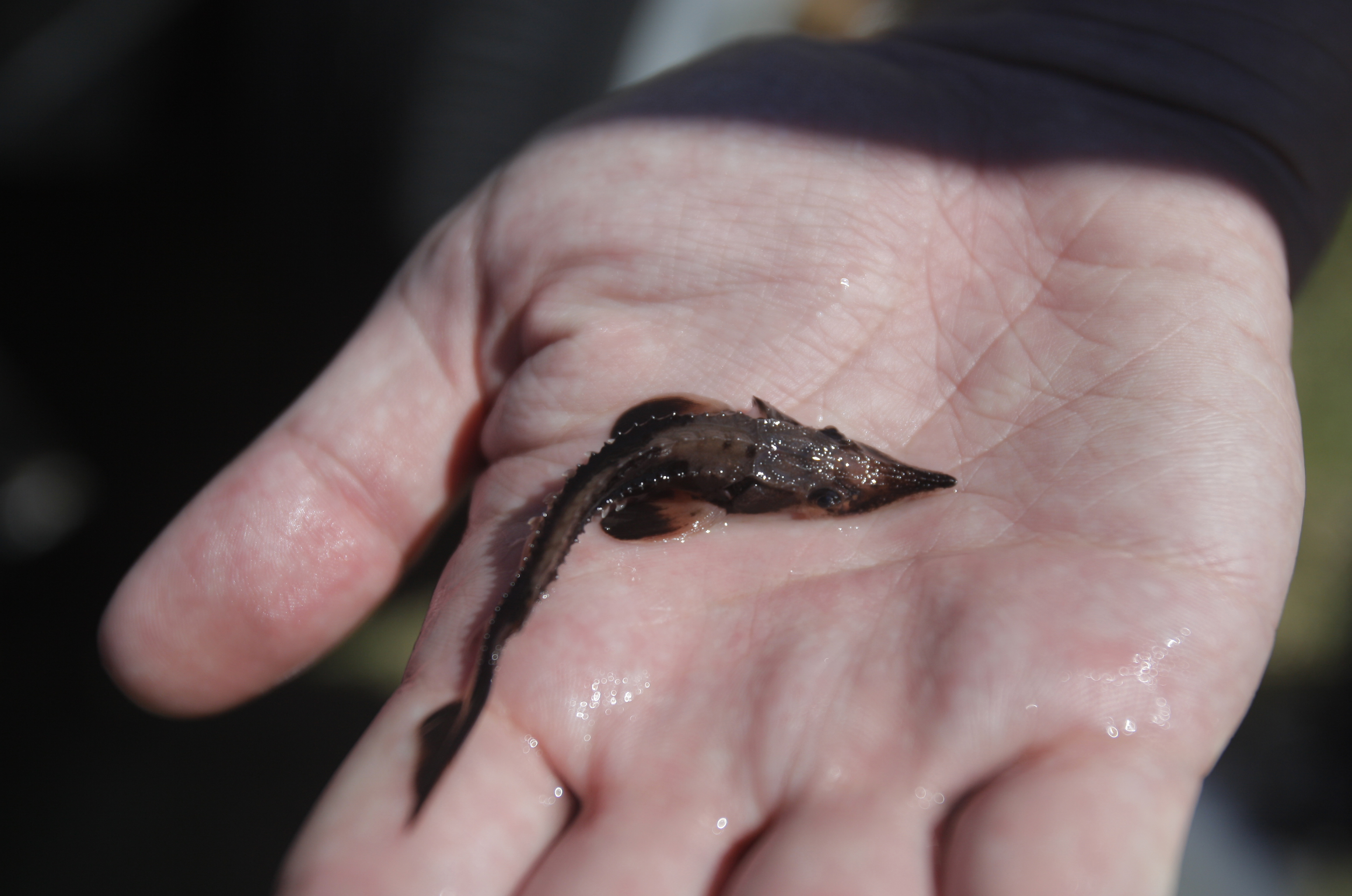Sturgeons making a comeback in Coosa River system
Friday, January 1, 1904
CALHOUN, Ga. - For eons, seven-foot long lake sturgeons cruised the muddy bottoms of Northwest Georgia rivers until they were wiped out 50 years ago.
But if scientists and volunteers have their way, the ancient fish will be cruising again.
A crew from Georgia's Fisheries Management section dumped 4,200 French fry-sized sturgeon into the Oostanaula River on Friday, the latest step in the decades-long plan to reintroduce the prehistoric species.
The last sighting of the sturgeon in the Coosa River system -- which includes the Conasauga, Coosawattee, Cartecay, Etowah, Oostanaula and Chattooga rivers -- occurred in 1960. Scientists believe pollution and habitat degradation doomed the native fish, but now that rivers have been cleared up, they believe the sturgeon -- hatched from eggs laid in Wisconsin -- can make a comeback.
Shell Underwood, a math and science teacher at North Whitfield Middle School, brought her students to help release the fish at a Gordon County boat ramp because they had been studying humans' impact on the environment.
"The sturgeon was a perfect example," she said as an excited line of students waited for the fish to be put in the river. "This is our way of putting history right."
A busload of seventh-graders waited excitedly in two lines for a chance to dip a net full of sturgeons into the Oostanaula. Through the process they learned the ups and downs of conservation.
"It looks dead," said one of the students, pointing to a limp, belly-up fingerling swirling in the eddies at the base of the ramp.
 Fisheries Technician Mark Bowen releases the last of a batch of Lake Sturgeon into the Oostanaula River in Calhoun, Ga., on Friday. Fish experts from the Georgia Department of Natural Resources met students from North Whitfield County Middle School in Calhoun, Ga., on Friday to release young Lake Sturgeon into the Oostanaula River.
Fisheries Technician Mark Bowen releases the last of a batch of Lake Sturgeon into the Oostanaula River in Calhoun, Ga., on Friday. Fish experts from the Georgia Department of Natural Resources met students from North Whitfield County Middle School in Calhoun, Ga., on Friday to release young Lake Sturgeon into the Oostanaula River."They won't all make it," Underwood explained.
"They're just sleeping," one of the fishery staff cheerfully interjected.
"We hope," another student said gravely.
Survival rates are low for the tiny sturgeons.
"When you're a small, little fish swimming around in a big world, there's a lot of things that would like to eat you," said fisheries biologist John Damer.
But the ones that survive should become some of the biggest fish in the river.
Some of the previous generations reintroduced into other Coosa tributaries have already grown to be nearly four feet long when they've been recaptured. They're expected to eventually grow to be 50 pounds and close to six feet, but some could push seven feet and 100 pounds.
"It's kind of unknown how big they'll get," Damer explained.
Sturgeon are a valuable indicator species for the region's water quality, he said, and anytime a system loses a native species, it can upset the delicate ecological balance. The program aims to build the population up enough so the sturgeon can become sport fish for the state's anglers, he said. Since it can take females 25 years to reproduce, it will be future generations of anglers who get to try their hand at reeling in a sturgeon.
"It's going to take a long time for these fish to live long enough to spawn on their own," he said.
The Tennessee Aquarium spearheads a similar effort in the Tennessee River Basin. The Georgia program began in 2002, a year after the aquarium began releasing the fish in Tennessee.
"They have a much smaller river system so, in some ways, they're ahead of us," said Anna George, director of the Tennessee Aquarium Conservation Institute.
She said the fish have been reported as far away as Kentucky Lake, about 500 miles downstream from where they were released in the Tennessee Basin. Even last week a canoeist reported seeing three three-foot long sturgeon in South Chickamauga Creek.
"It's very cool to have a big fish back in the river," she said.

